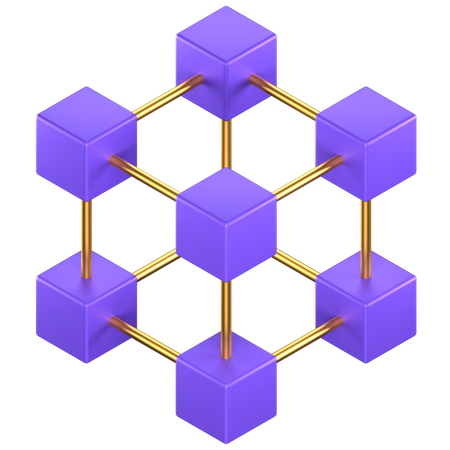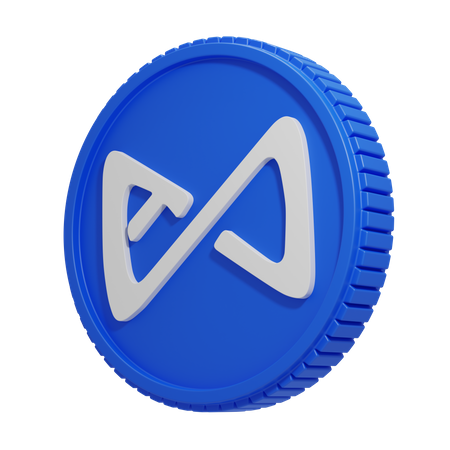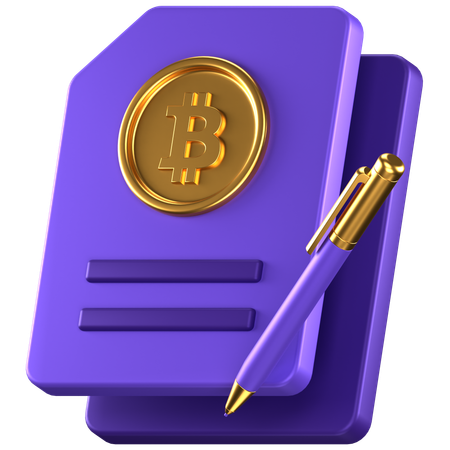Custom dApp Development
Decentralized Application Development
At our company, we specialize in building decentralized applications, also known as dApps. These are applications that run on a blockchain instead of being controlled by a single company. Because of this, they offer more security, transparency, and fairness to users. Let’s look at some real-world examples of how dApps are making a difference in various industries:
- Finance: Applications like Uniswap allow people to trade cryptocurrencies without needing a traditional bank or exchange.
- Gaming: Games like Axie Infinity let players earn money by playing, with game characters stored as NFTs (Non-Fungible Tokens) on the blockchain.
- Healthcare: Platforms like Medicalchain enable secure storage and sharing of medical records, where patients own and control their health data.
- Supply Chain: VeChain tracks products through every stage of production and delivery, ensuring transparency and reducing fraud.


1. Finance: Uniswap (No Need for Banks)
In the finance world, apps like Uniswap allow people to buy, sell, and trade cryptocurrencies directly with each other—without needing a bank or a traditional financial institution. Usually, if you wanted to exchange money or cryptocurrencies, you’d go through a bank or an exchange, which takes fees and controls the transaction.
How it works

2. Gaming: Axie Infinity (Earn Money by Playing)
In gaming, apps like Axie Infinity allow players to earn real money by playing. In this game, players collect and battle with digital creatures called Axies. These Axies are stored on the blockchain as NFTs (Non-Fungible Tokens), meaning each one is unique and owned by the player.
How it works
Imagine owning a special character in a video game that no one else can have, and being able to sell it to others for real money. That’s what Axie Infinity does—players can earn, trade, or sell these digital creatures and make money, all through blockchain technology.

3. Healthcare: Medicalchain
In healthcare, platforms like Medicalchain use blockchain to securely store and share medical records. This gives patients control over their own health data, which can be securely shared with doctors and hospitals when needed. Traditionally, hospitals and healthcare providers store your data, and you often don’t have direct access or control over it.
How it works in simple terms
With Medicalchain, you own your medical records. If you visit a new doctor or hospital, you can safely share your health data with them through a secure system. This ensures your information is private and only shared when you choose.

4. Supply Chain: VeChain
In the supply chain industry, VeChain uses blockchain to track products as they move from the manufacturer to the store. This is useful for industries like food, fashion, and pharmaceuticals, where it’s important to know where products come from and if they’ve been handled properly.
How it works
VeChain helps companies track every step of their products’ journey. If you’re buying a luxury item or medicine, for example, VeChain’s blockchain can tell you where it was made, how it was shipped, and whether it’s authentic. This reduces fraud and makes sure customers get the real deal.
We help businesses build apps that run on blockchain. These apps remove the need for middlemen, like banks or big companies, and give users more control, security, and transparency. Whether it’s:
- Trading money, like with Uniswap,
- Playing gamesand earning money, like with Axie Infinity,
- Managing your health, like with Medicalchain, or
- Tracking productsfrom start to finish, like with VeChain,
blockchain-powered apps make things more efficient, transparent, and secure. We help bring these kinds of apps to life for businesses in any industry.
Front-end & Back-end Development
Front-end Development: What Users See and Interact With

Back-end Development: How the App Works Behind the Scenes
The back-end is where all the heavy lifting happens behind the scenes. It’s the part that users don’t see, but it’s crucial for making the app work correctly. In a decentralized app, this is often powered by smart contracts, which are programs stored on the blockchain that automatically execute tasks (like sending or receiving tokens) when certain conditions are met.
Going back to the Uniswap example: When a user decides to swap one token for another, the front-end makes it simple by allowing them to select and click “swap.” However, behind the scenes (in the back-end), smart contracts are handling the actual exchange of tokens securely and automatically. The blockchain records every step of the process to ensure it’s safe and transparent.

The back-end is the “brain” of the app. It processes requests, executes transactions, and ensures that everything runs smoothly, even though users don’t see this part.
We build apps that are easy to use on the outside (front-end) and ensure that everything works smoothly and securely behind the scenes (back-end). For example, in an app like Uniswap:
- The front-end is the simple interface where you select which tokens you want to swap.
- The back-end uses blockchain and smart contracts to execute the token swap automatically, ensuring security and transparency.
Together, the front-end and back-end make a seamless user experience. The front-end makes the app look good and easy to use, while the back-end ensures that all the important blockchain technology works smoothly in the background.
Smart Contract Integration
A smart contract is like a digital agreement that is programmed to execute automatically when certain conditions are met. Think of it as a computer program that follows a set of rules and runs on its own—without needing any human involvement once it’s set up.
In decentralized apps (dApps), smart contracts are the “brains” that handle the logic and operations. They allow the app to work independently, securely, and without the need for a middleman, like a bank or broker.


Aave - Decentralized Lending App
Let’s take the example of Aave, a popular decentralized lending app. In traditional lending, you would go to a bank to borrow money, and the bank would control the process, set the terms, and manage payments.
But with Aave, smart contracts take over the entire process. Here’s how it works:
- A user wants to borrow cryptocurrency, so they go to the Aave app.
- A smart contract automatically checks if the user has enough collateral (assets to back the loan).
- If the conditions are met, the smart contract approves the loan and transfers the cryptocurrency to the borrower.
- The borrower repays the loan, and the smart contract automatically releases their collateral.
Throughout this process, there’s no bank or financial institution involved—just the smart contract running everything according to the programmed rules.
Smart contracts are like computer programs that run automatically when certain conditions are met. They are essential to how decentralized apps work because they:
- Execute transactionswithout needing human involvement.
- Ensure rules are followed(e.g., making sure someone has enough collateral before giving them a loan).
- Remove the need for middlemen, like banks or brokers.
For example, in Aave:
- The smart contract checks if you have the right amount of assets to borrow.
- It then handles the loan process, ensuring payments and collateral are managed without needing any humans to oversee it.
Smart contracts are the backbone of decentralized apps. They are self-executing programs that automate processes, making apps more secure, transparent, and efficient. They make sure that everything happens automatically, based on the rules programmed into them, and there’s no need for third parties or middlemen to be involved.
DeFi Platforms (Decentralized Finance)
Decentralized Finance, or DeFi, is one of the most significant and transformative uses of blockchain technology today. It offers financial services like lending, borrowing, trading, and earning interest, but without the need for traditional banks or financial institutions. Everything is powered by blockchain and smart contracts, which automate and manage transactions securely and transparently.
How DeFi Works
In traditional finance, if you want to borrow money, lend it, or even trade assets, you typically go through banks or financial institutions. These institutions act as intermediaries, charging fees, setting the rules, and handling transactions.
In DeFi, blockchain technology replaces the need for these intermediaries. Instead, smart contracts (which are self-executing programs) manage everything automatically. This allows users to access financial services directly from their crypto wallets, without needing approval from a bank or third party.

Popular Examples of DeFi Platforms
| Platform | Description | Example | Benefit |
|---|---|---|---|
| Aave | Decentralized Lending & Borrowing | Aave allows users to lend or borrow cryptocurrency using collateral. If you have Ethereum (ETH) but don’t want to sell it, you can use Aave to borrow another cryptocurrency (e.g., USDC) by using your ETH as collateral. | No need for a bank; all transactions are handled through Aave and smart contracts. |
| Compound | Earning Interest on Crypto | Deposit your crypto into Compound to earn interest, as it is lent out to other users who pay interest back to you through smart contracts. | Earn interest directly on crypto without traditional financial systems, ensuring asset safety and transparency. |
| MakerDAO | Decentralized Stablecoin Lending | Borrow DAI (a stablecoin) by using cryptocurrency like ETH as collateral, which maintains DAI's stability via smart contracts. | Borrow stable money (DAI) without selling crypto, bypassing traditional banking. |
Popular Examples of DeFi Platforms
| Feature | Description | How It Works | Benefit |
|---|---|---|---|
| Lending & Borrowing | DeFi platforms allow users to lend their crypto to others and earn interest. Borrowers can use their crypto as collateral for loans. | Smart contracts manage the process, ensuring lenders get paid interest and borrowers meet loan conditions, like providing sufficient collateral. | Earn interest or access loans without traditional banks, increasing accessibility and speed. |
| Trading | Users can trade cryptocurrencies on decentralized exchanges (DEXs) without a traditional exchange or broker. | Trades are executed through smart contracts, so users maintain control of their funds without needing a third-party exchange. | Trade directly without intermediaries, ensuring control over funds and enhancing transparency. |
| Staking & Yield Farming | Staking lets users lock up crypto to support network operations, earning rewards. Yield farming involves providing liquidity to exchanges for additional rewards. | Smart contracts automatically distribute rewards based on the amount staked or provided as liquidity. | Earn passive income through staking and liquidity provision, supporting network security and functionality. |
| No Middlemen | DeFi eliminates banks, brokers, or intermediaries. Smart contracts manage everything from loan approvals to interest distribution. | Smart contracts ensure that all processes are automated, efficient, and transparent. | DeFi is faster, more efficient, and often cheaper due to the lack of intermediaries. |
Popular Examples of DeFi Platforms
Accessibility
Anyone with an internet connection can access DeFi platforms. There’s no need for a bank account or credit score. You can manage your finances directly from your crypto wallet.
Lower Fees
Because there are no intermediaries, fees are typically lower than traditional banking or trading services.
Transparency
All transactions on a DeFi platform are recorded on the blockchain, meaning anyone can verify the rules and the transactions. This creates a more transparent financial system.
Ownership & Control
In traditional finance, banks or institutions control your assets. With DeFi, you have full control of your funds, and everything is managed through smart contracts, giving you more ownership over your assets.